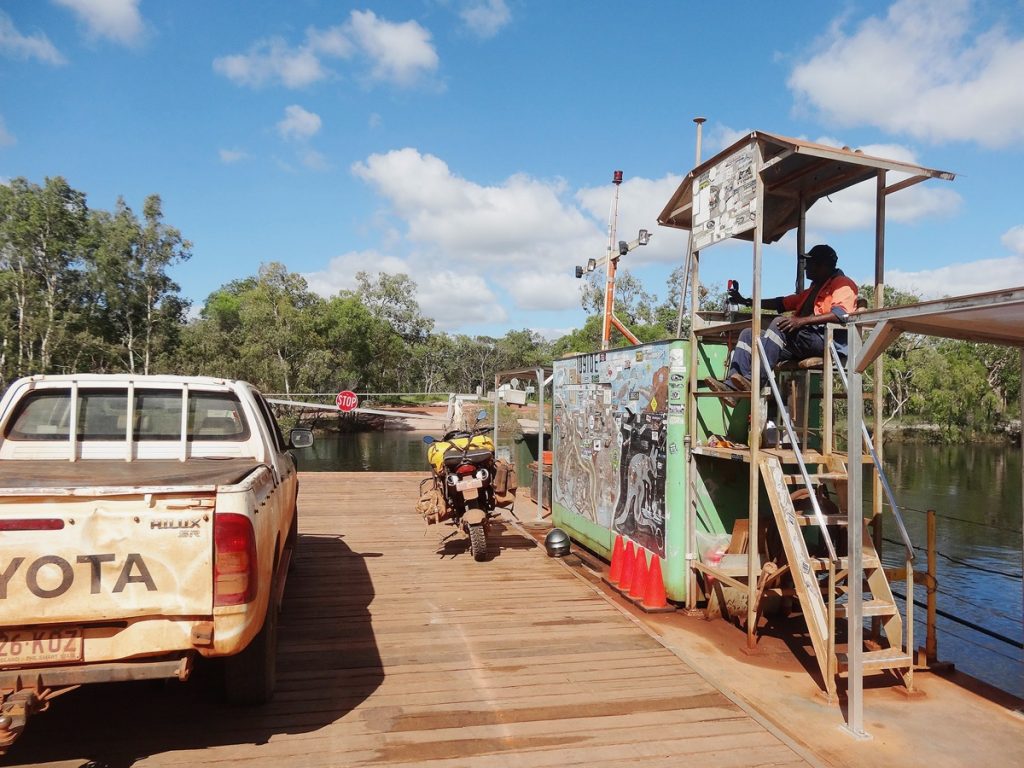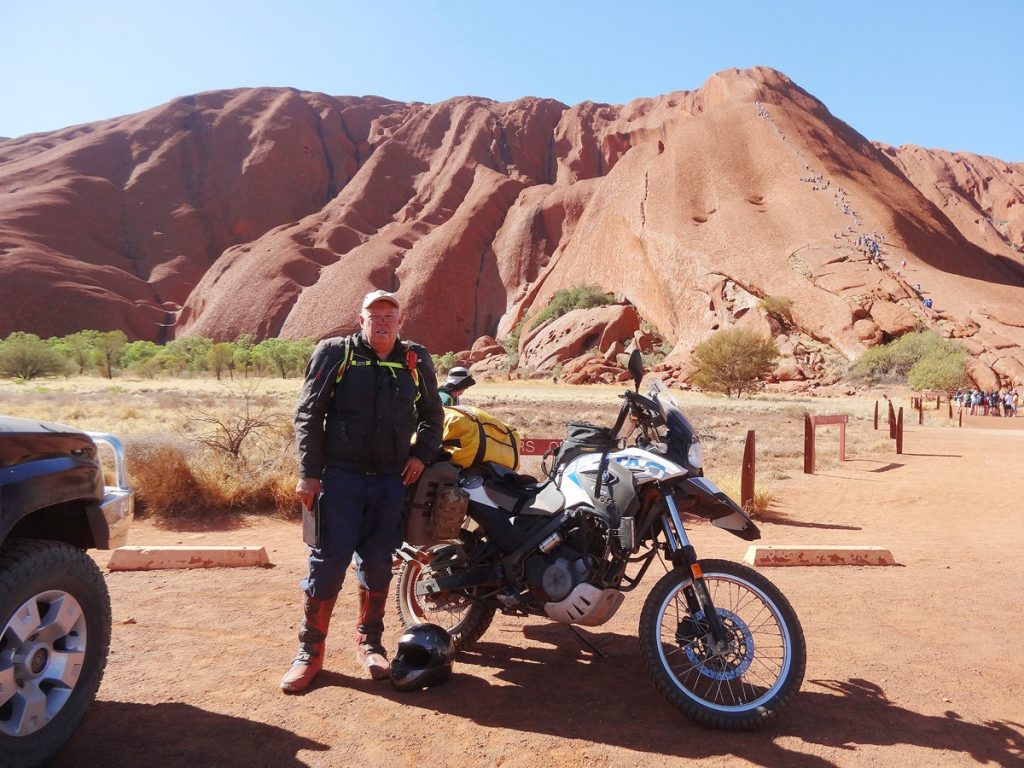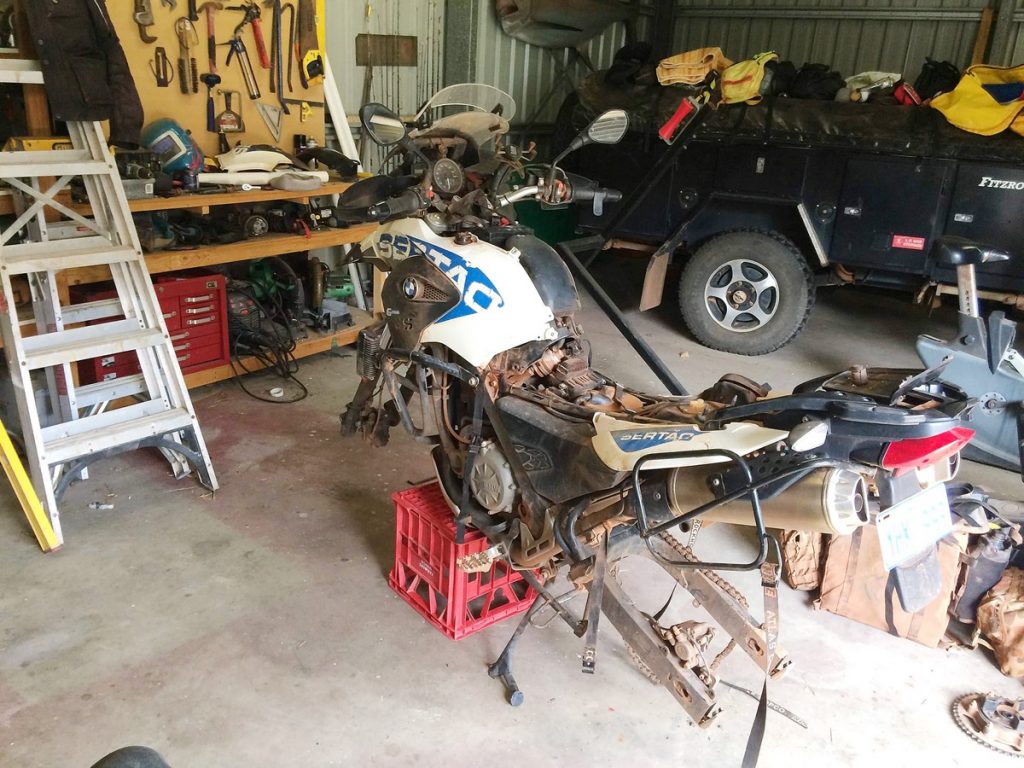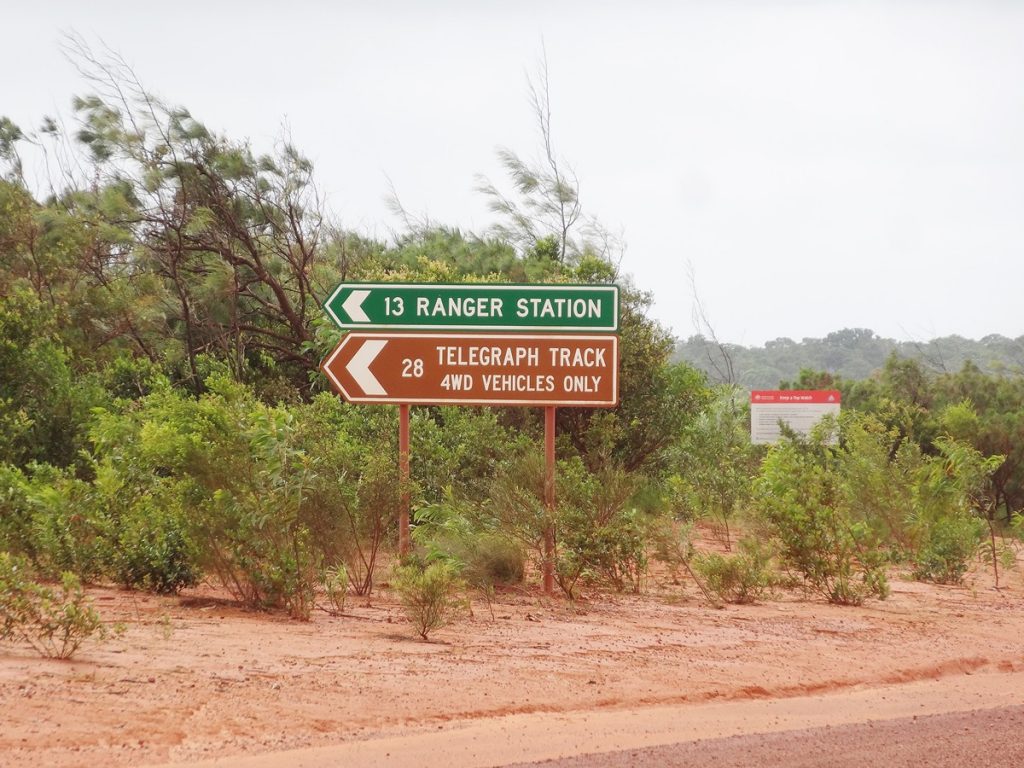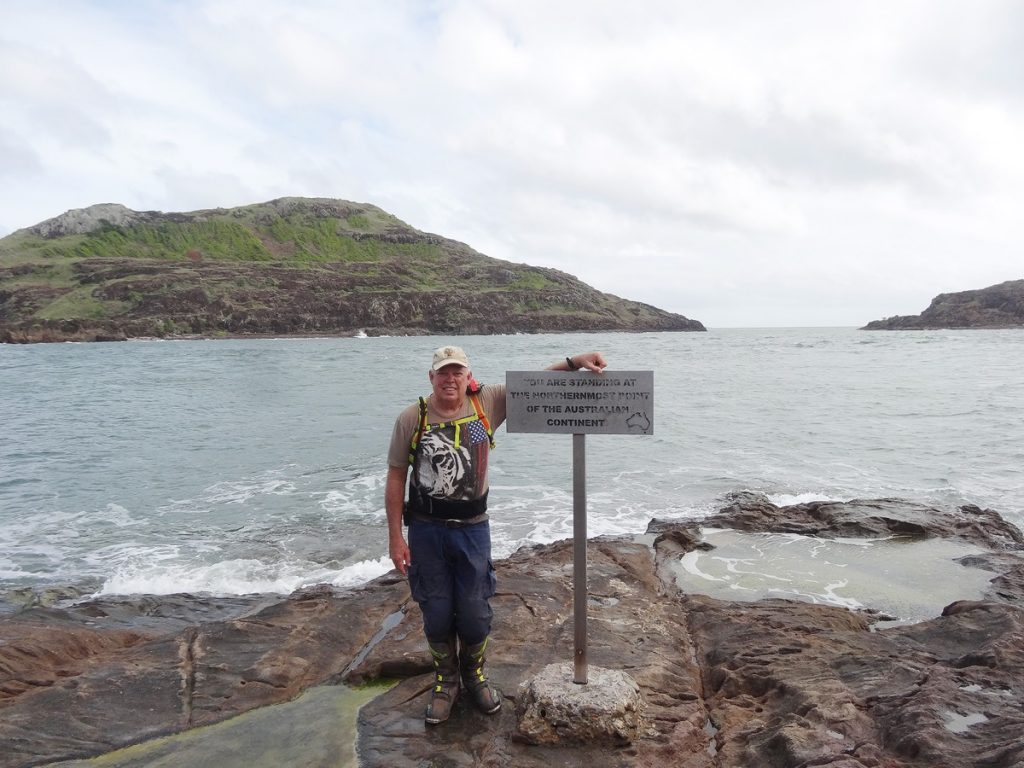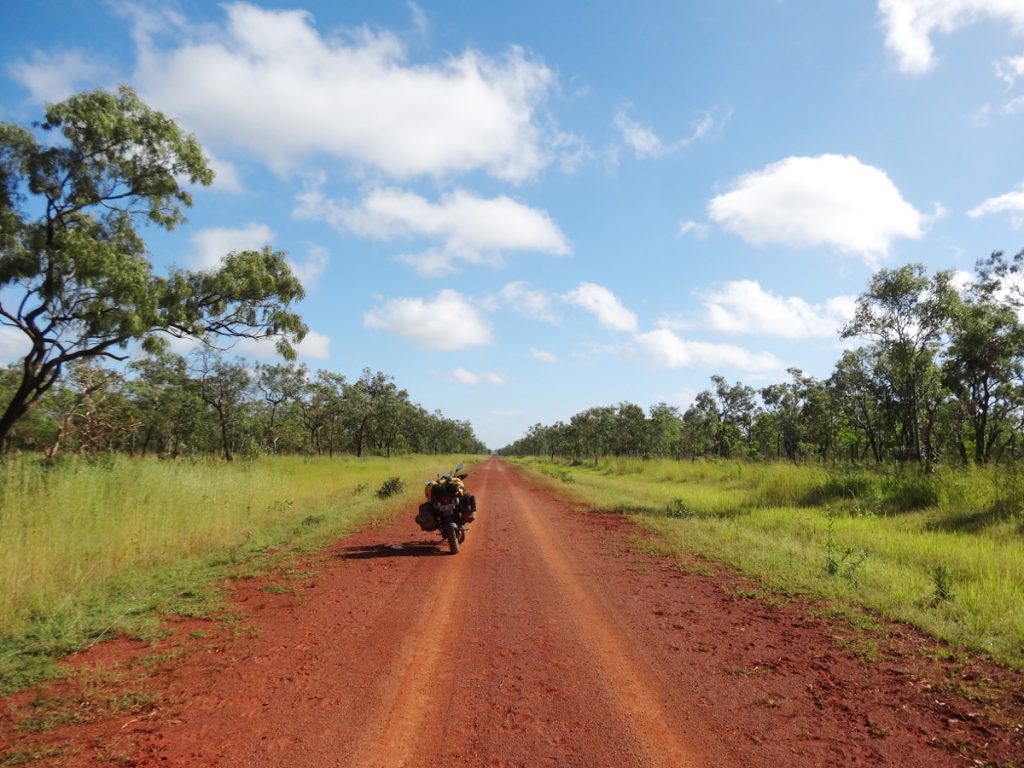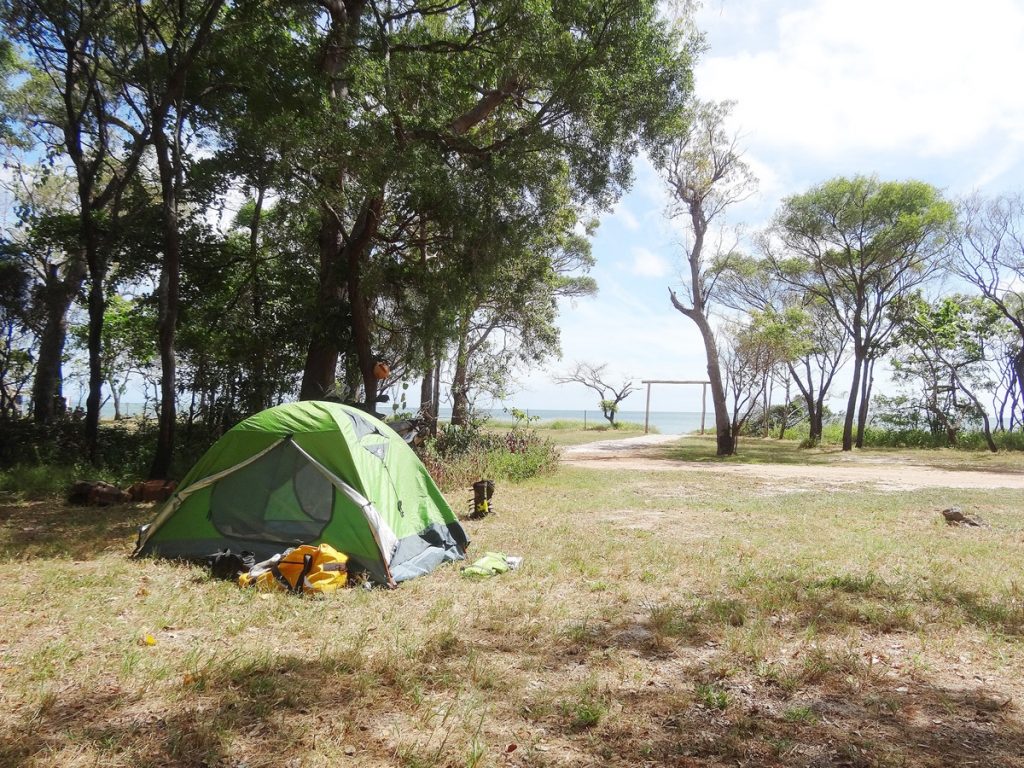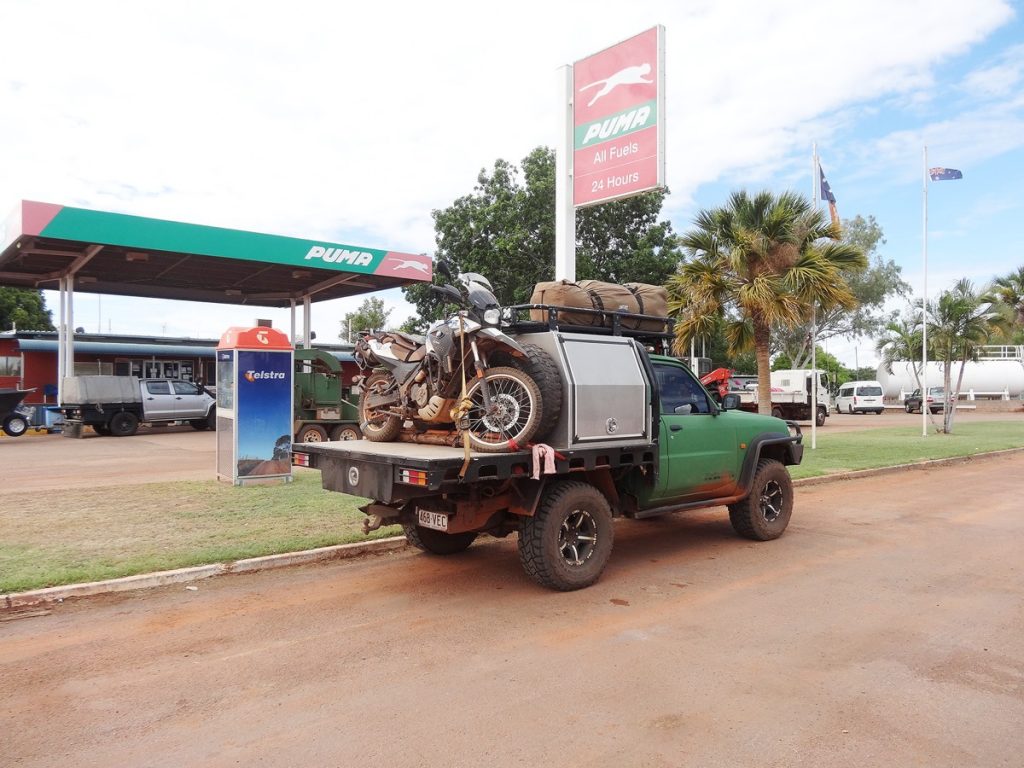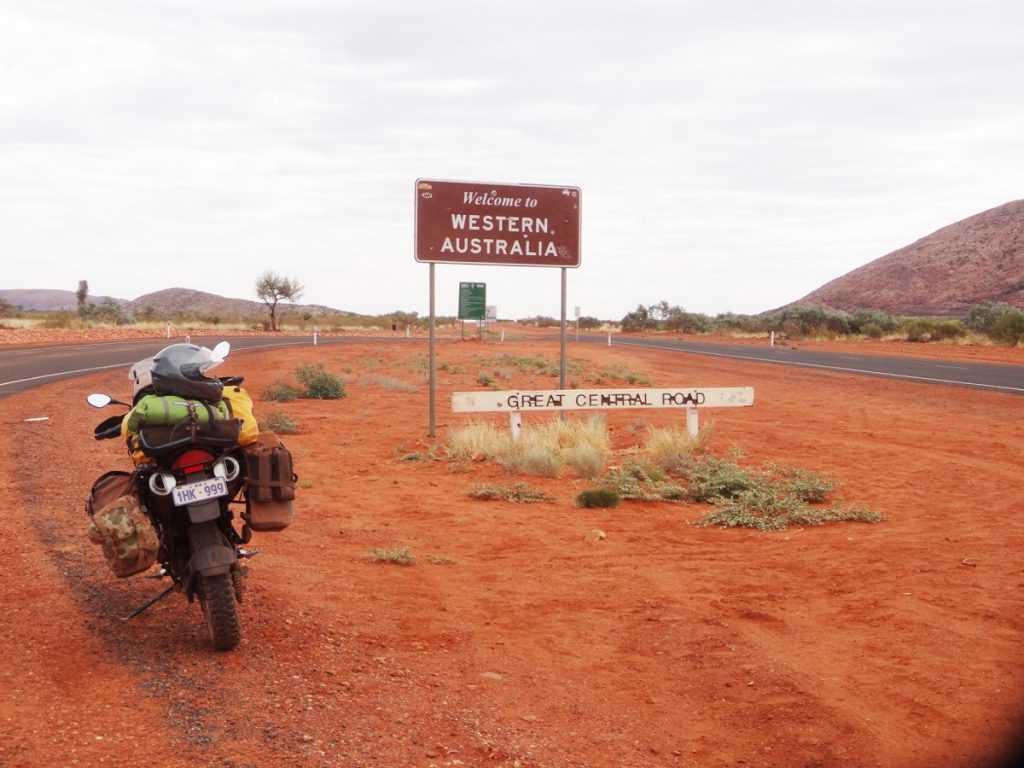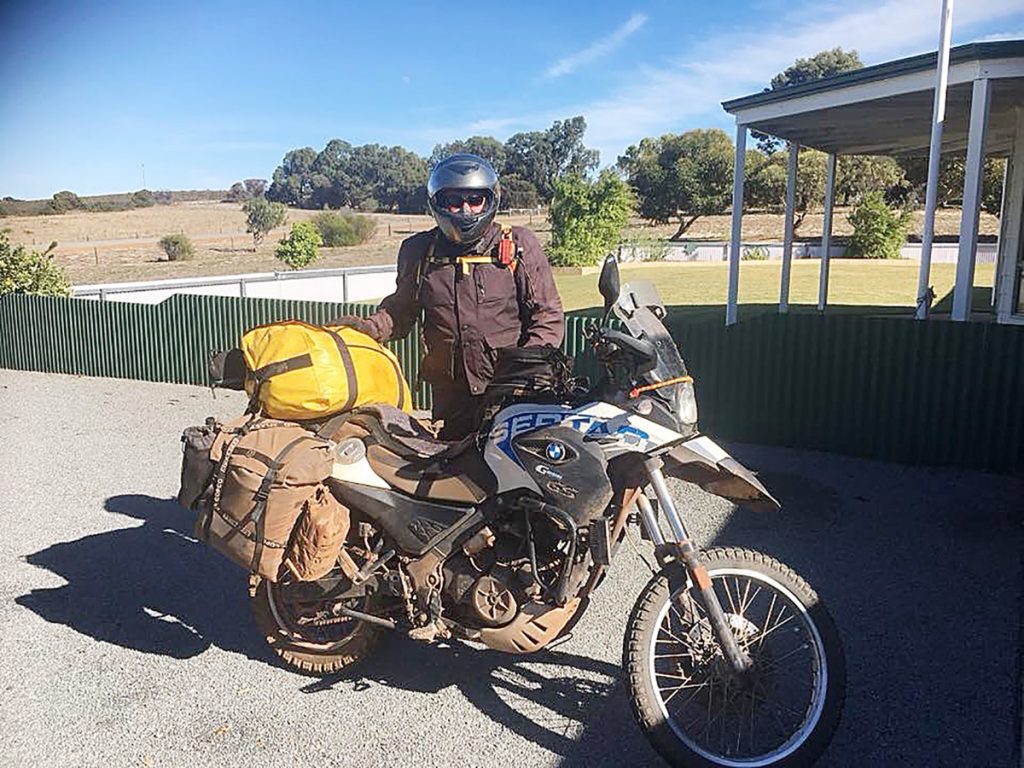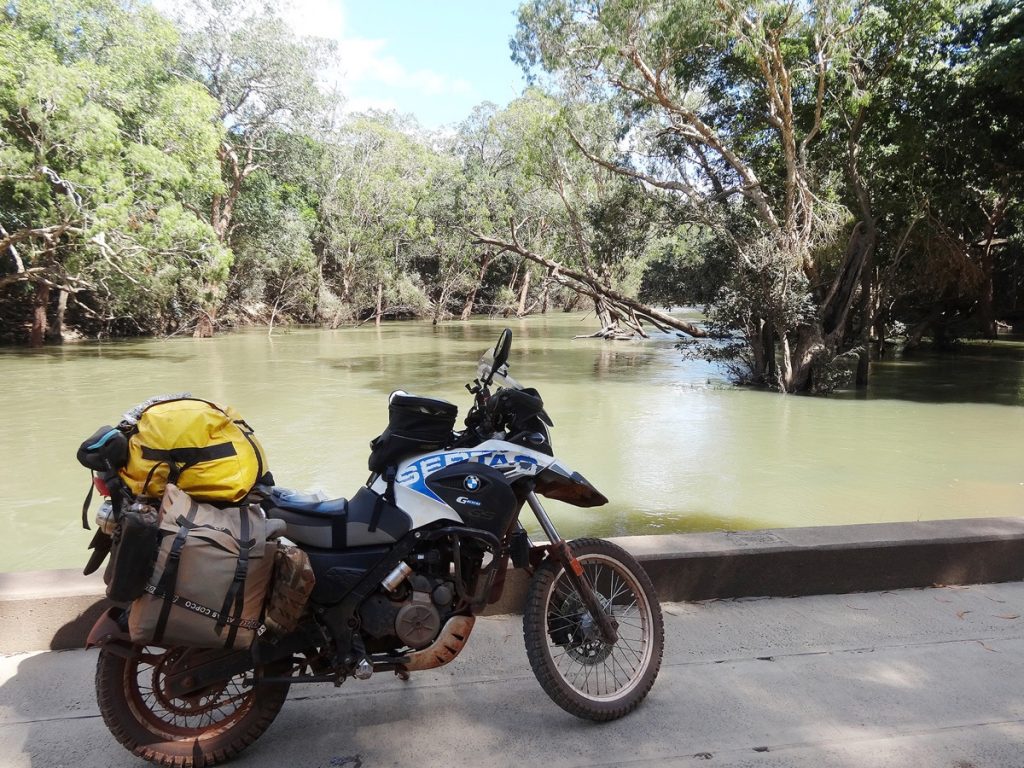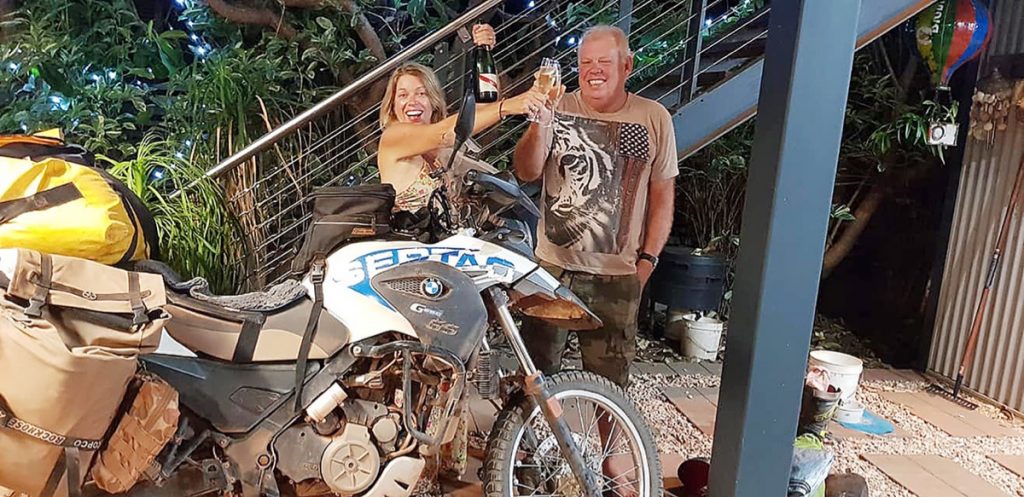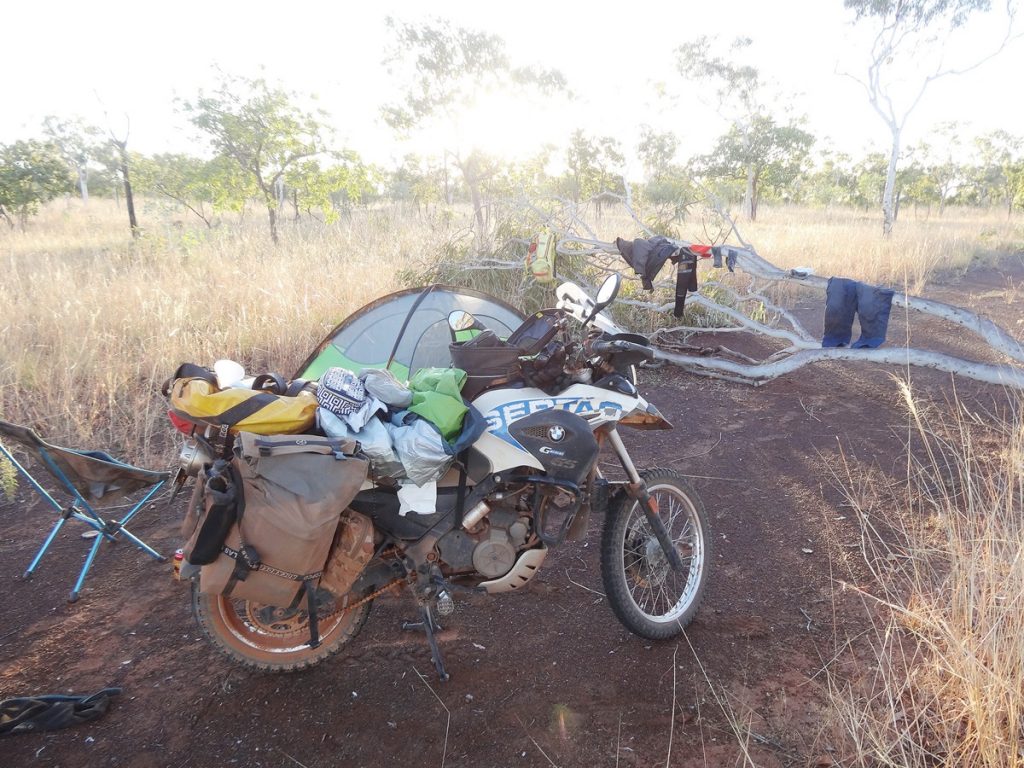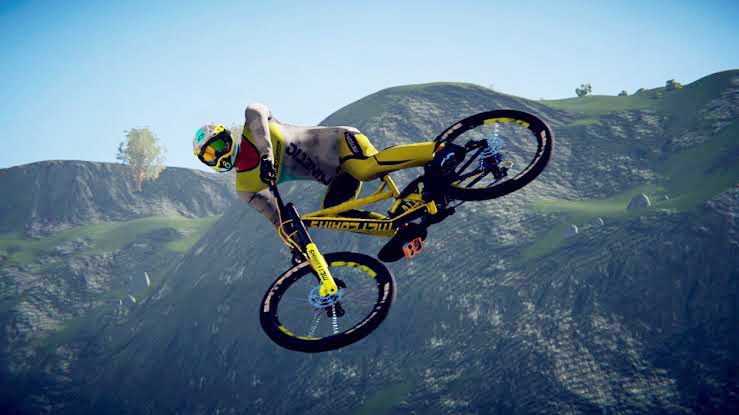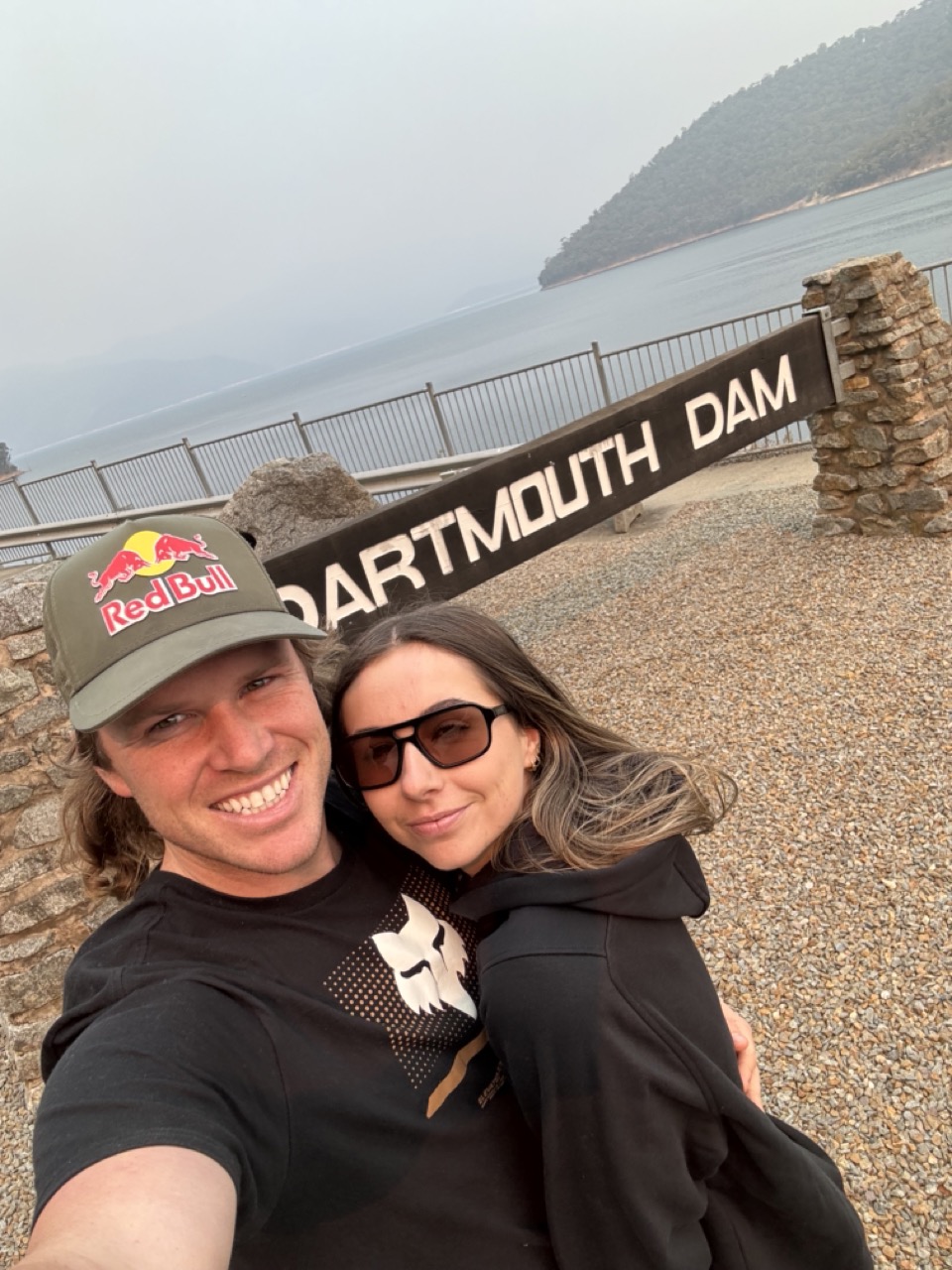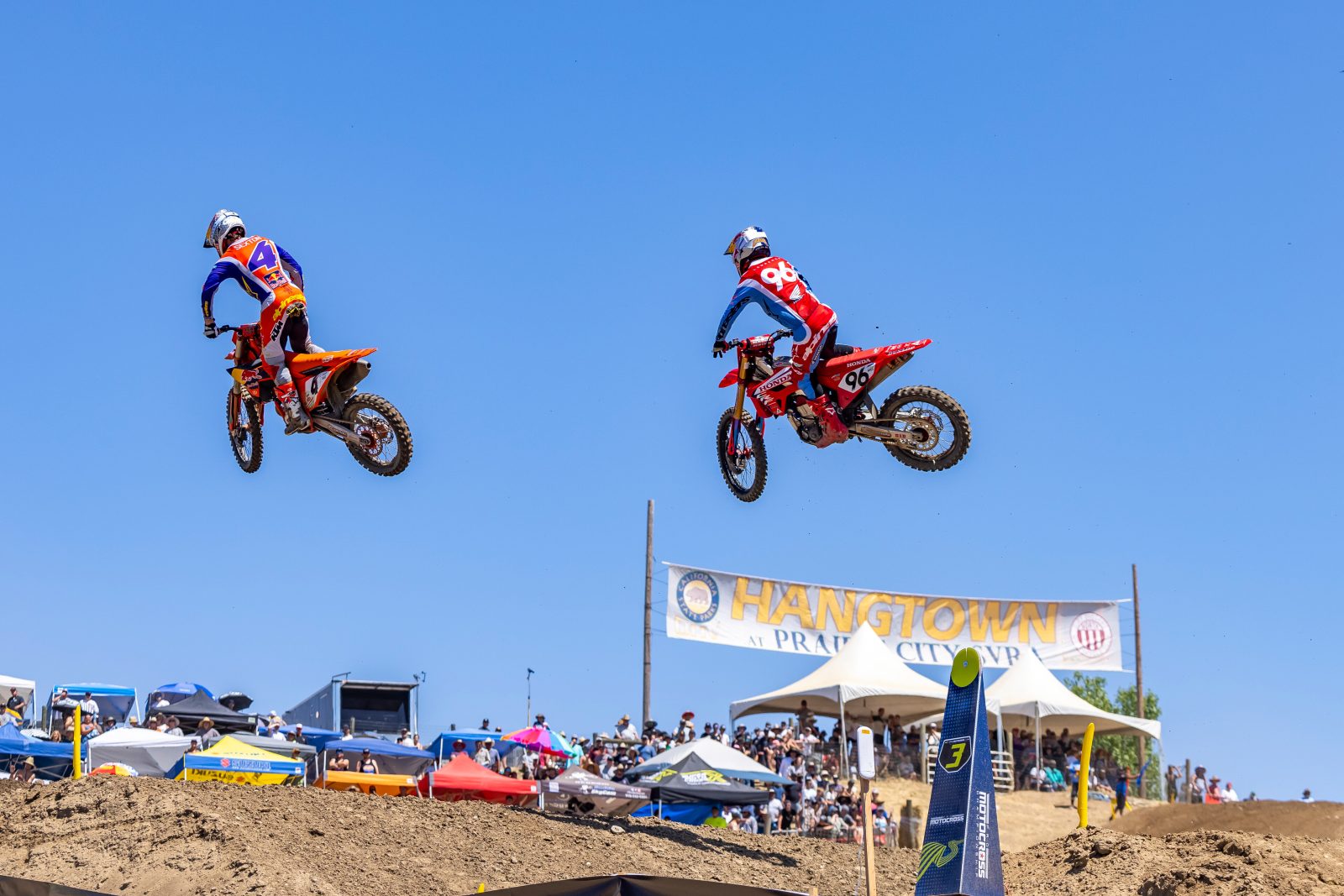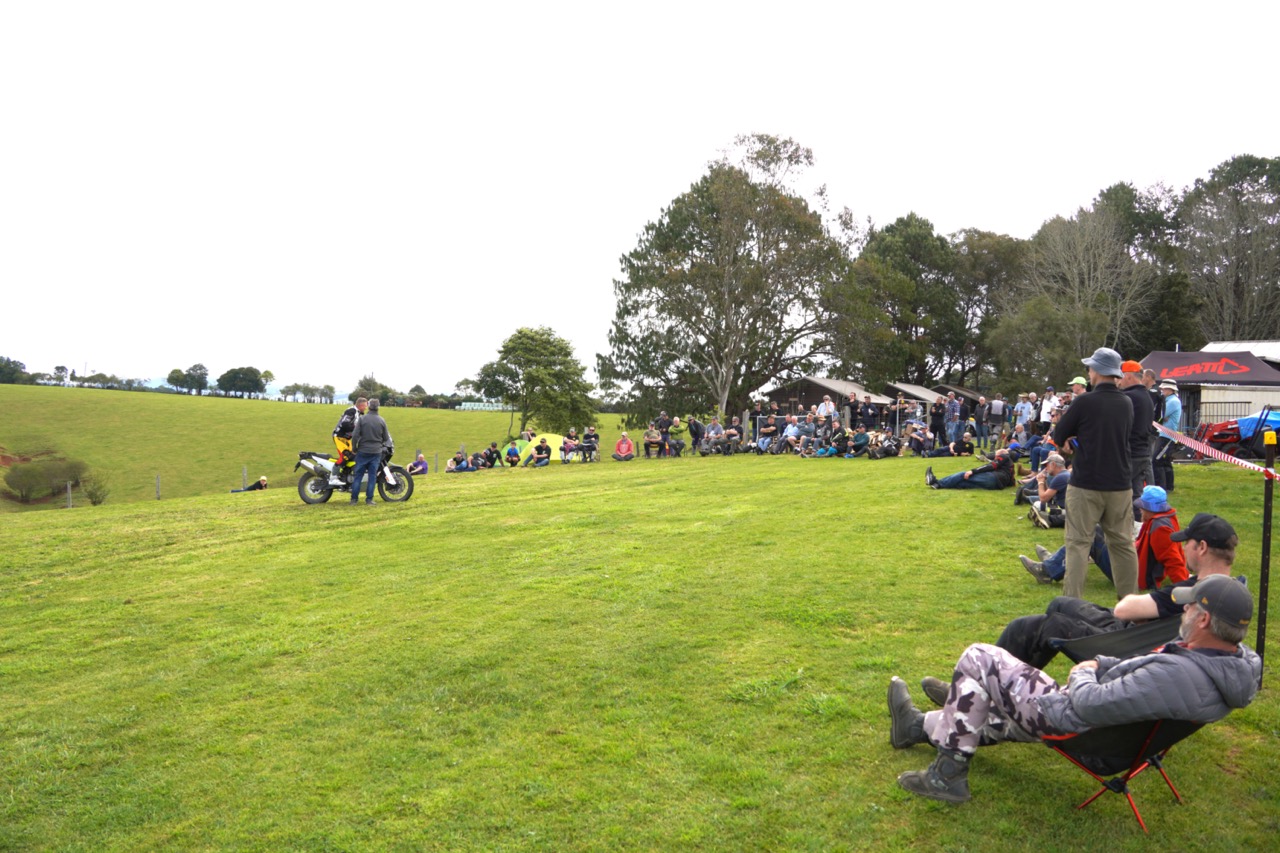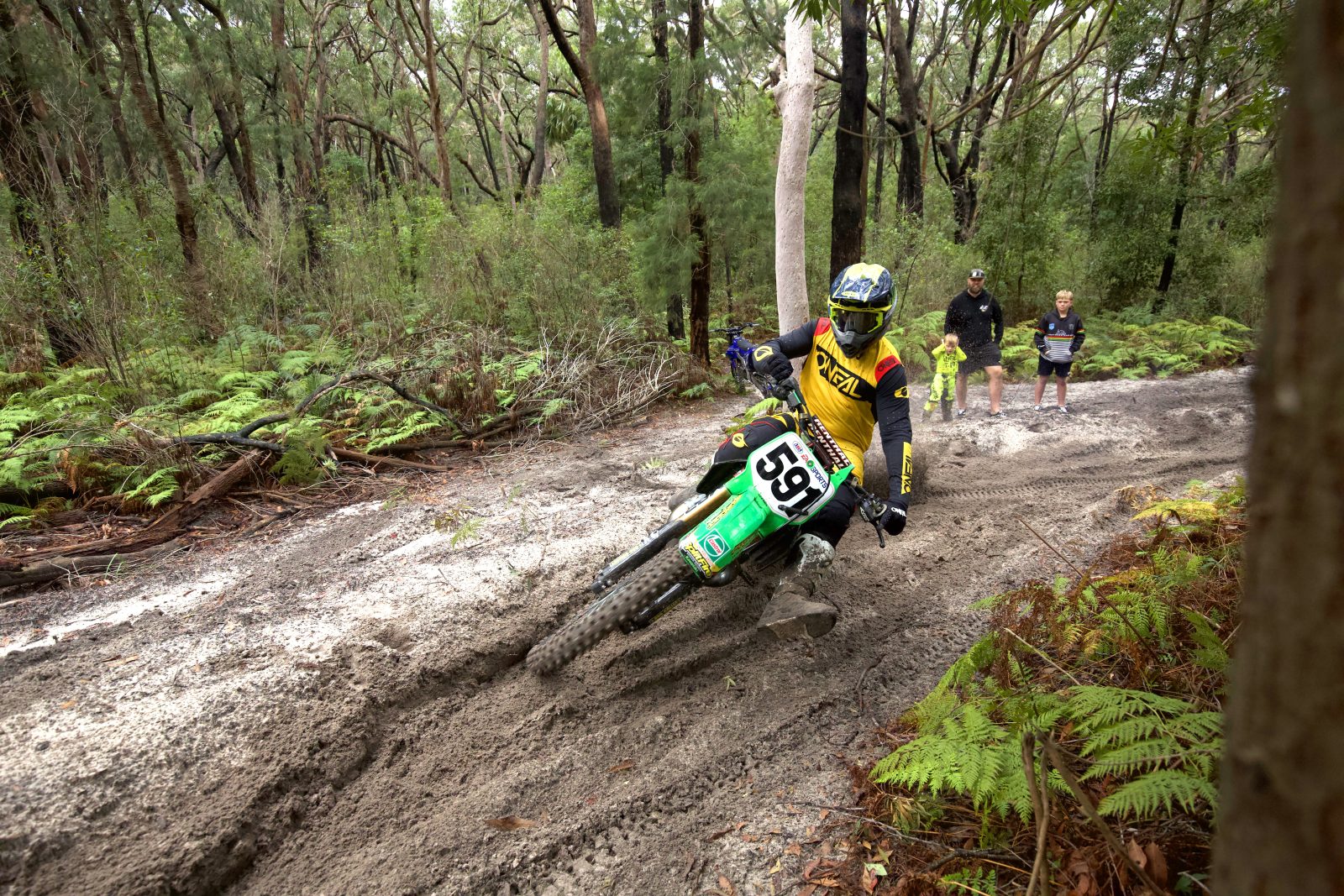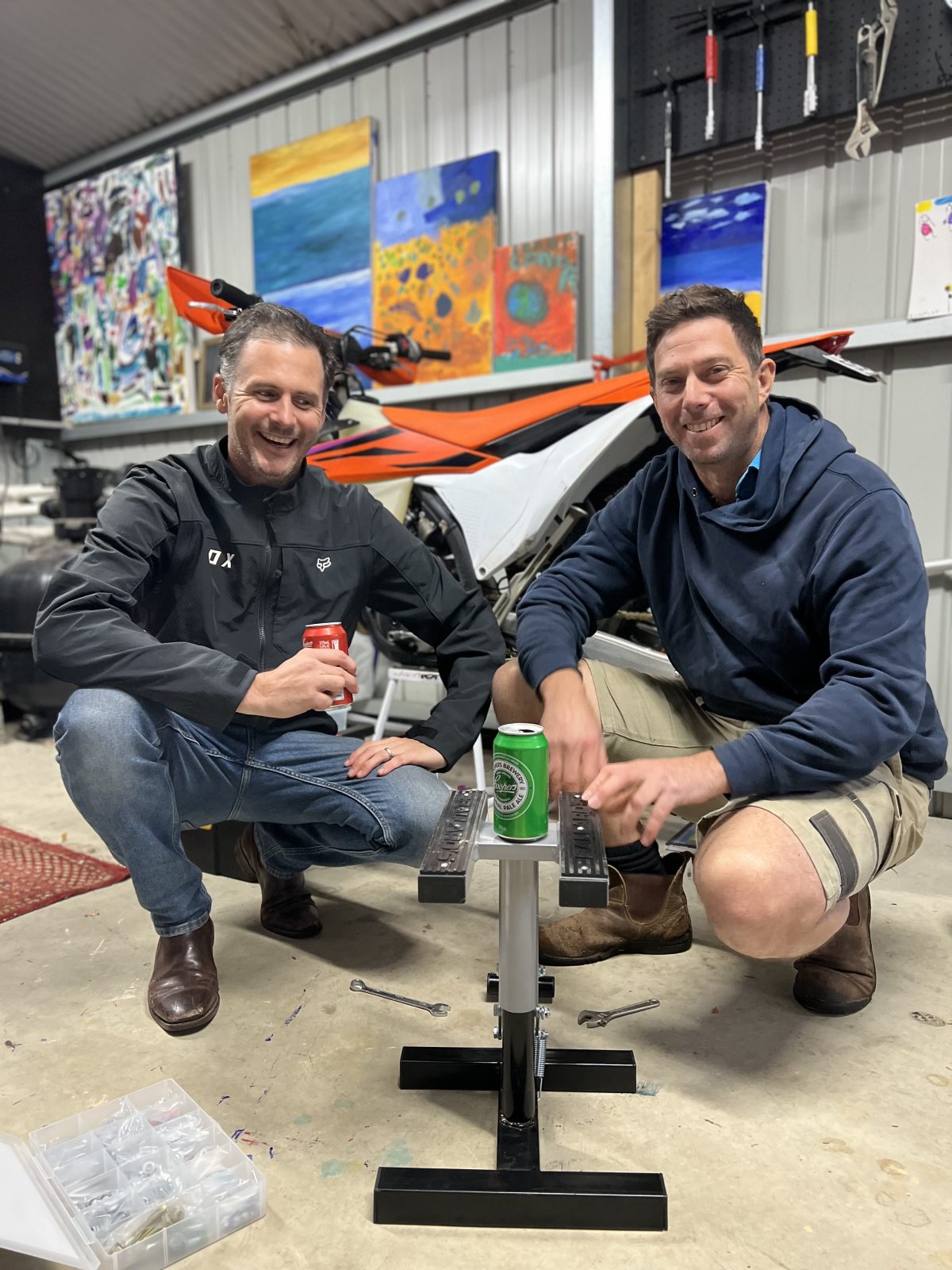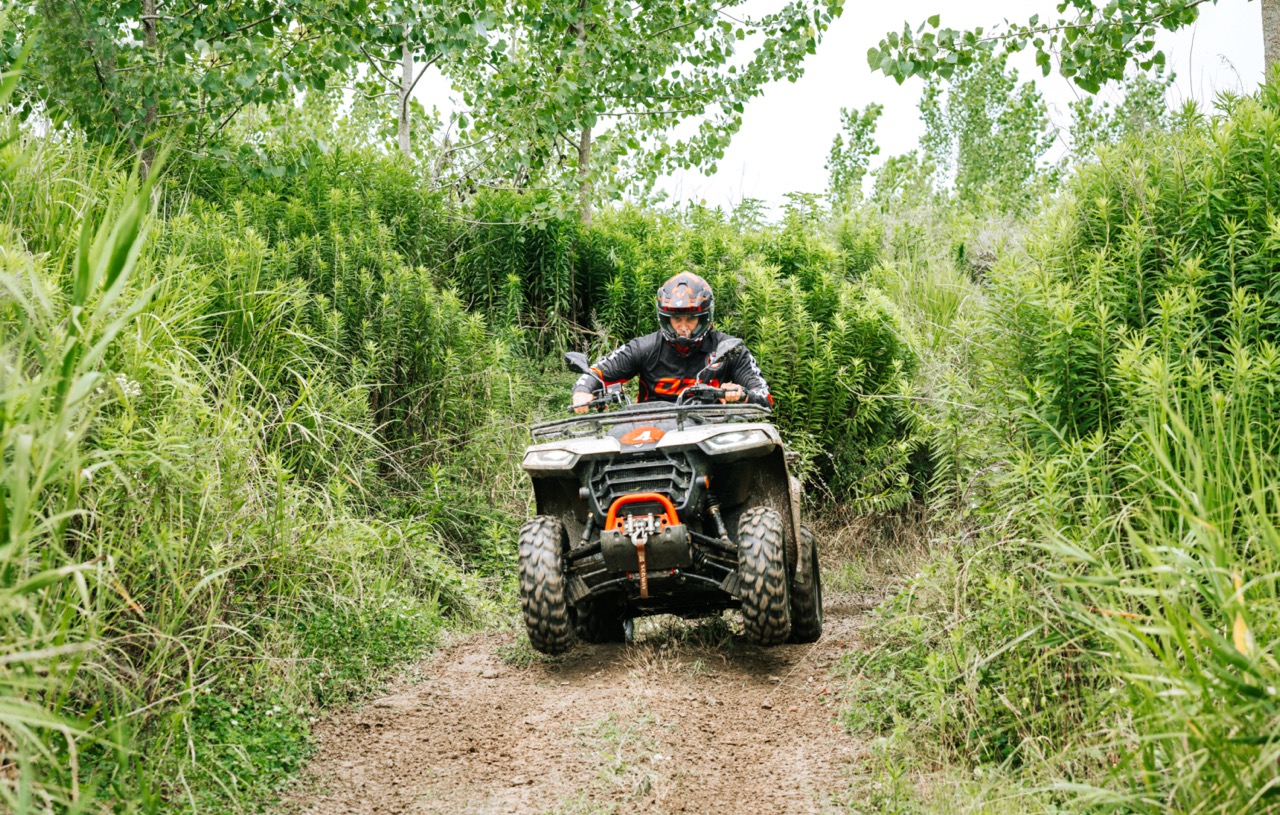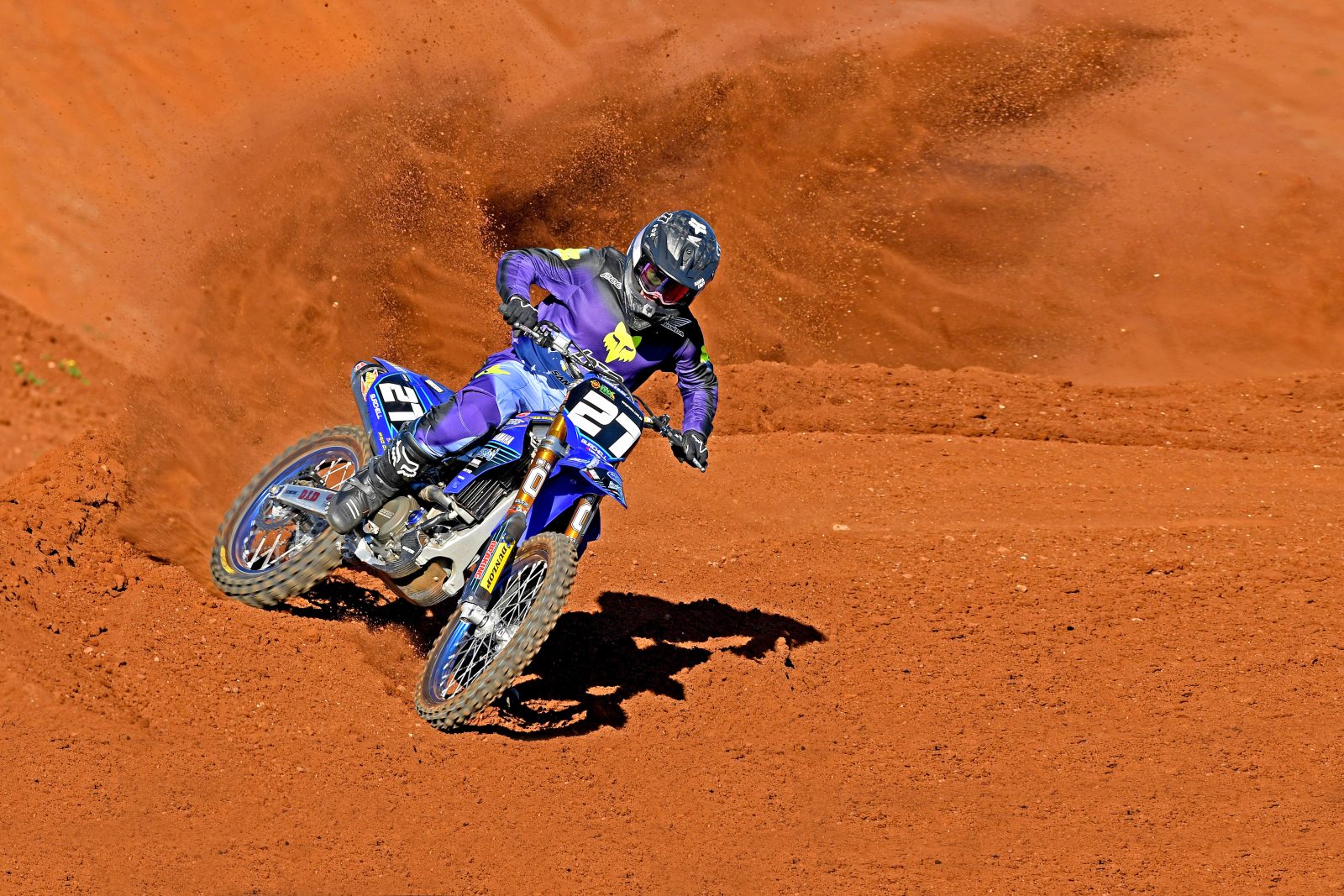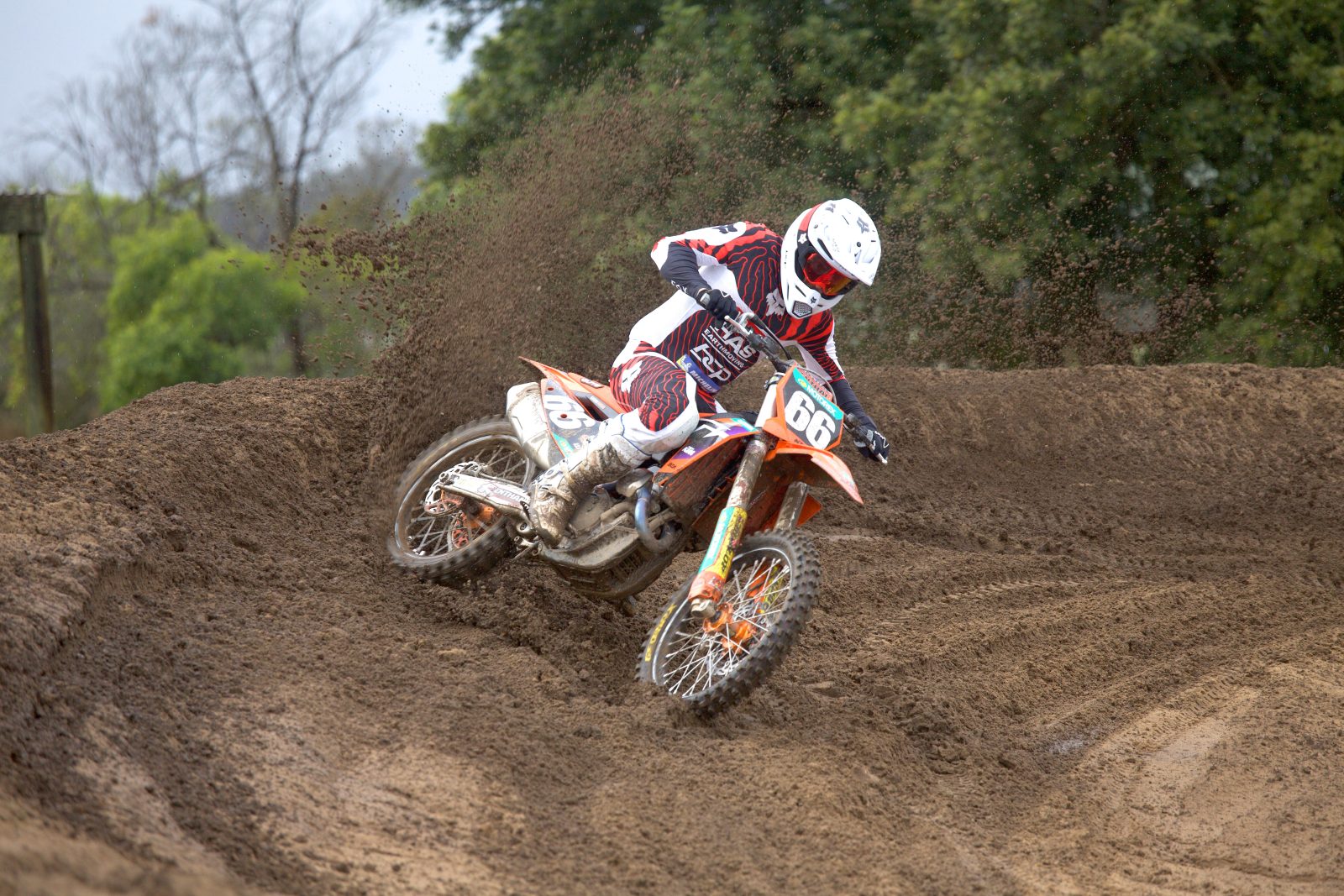WORDS & PHOTOS // MARK GIBBS
The plan was to ride from Perth across the Great Central Road from Laverton to Yulara then on to the top of Cape York and back home to WA via the Savannah Way, Darwin and the Gibb River Road.
I didn’t have a bike and hadn’t ridden one for nearly 40 years. Buying one was the easy bit, I bought a 2012 BMW G650GS Sertao with 31,000km on the clock. I figured the rider training would come along the way. I knew it was going to be tough, but doing it solo definitely raised the level of stupid.
GREAT CENTRAL ROAD
Three days into my trip, the poor bike and me didn’t know what had hit us as we started the GCR. It was tank slapping at 70kmh in soft sand, the front wheel was washing out fairly constantly and an emu tried to take me out but turned at the last second and run alongside me.
It was an emotional rollercoaster that stretched from cruising along on top of the world to heart-stopping moments trying to save front-end washouts and getting stuck in road-train wheel ruts in bulldust. To make matters worse, 30km out of Docker River I met two other riders who told me about the nightmare conditions ahead.
I re-arranged my luggage that night fearing the worst but the first thing I noticed was how much better the bike handled after I’d moved a few things around.
I stayed for two nights in Alice and went over the bike looking for damage before changing the paper air filter and refitting the chainguard, after a couple of screws had rattled loose. I hit the road again and took off up the Stuart Highway heading for the Plenty Highway, but it was closed due to flooding. I was stuck battling crappy road surfaces and looking out for the heaps of road trains on my way to Mt Isa and Cairns.
CAPE YORK
Without doubt, Cape York was one of the toughest things I’ve ever done. After checking that the Peninsula Development Road (PDR) was open, I left my friend’s place in Cardwell, FNQ.
Rio Tinto looks after much of the PDR, but after the Weipa turnoff it went down to a single-lane track and, due to flooding, that track had turned into a river with kilometres of scouring down the road. Then there were the sections of mud, where you couldn’t tell how deep the wheel ruts were because they were full of water.
One of the things I learnt from the trip, was that no matter how far gone the bike felt, not to give up but keep fighting it. The number of potential crashes I recovered from beggars belief, not because of my skill or talent but pure survival instinct.
I also had some scary moments with river crossings. One was an old concrete causeway that was 50 metres wide and the water over 30cm deep. I walked it barely and the flow was very fast. It was pretty sketchy riding through it but I was too busy fighting the pull on the front wheel to be distracted.
I eventually arrived at Bramwell Junction after taking four hours to do 196km. According to the guy at the roadhouse it was only 170km of “good road” to the Jardine River ferry and 40km more to Bamaga. I decided to push on, even though I was stuffed, thinking it would be an easy ride. There was cattle, kangaroos, trees down over the road, dips, scoured out creek crossings, really heavy corrugations, mainly on corners, and plenty of soft sand so it was a really long 170km.
Eventually I got onto the Punsand Bay road in the late afternoon and it was a piece of crap. Arriving at another river crossing, I thought it looked short, shallow and sandy, but got halfway across and the front of the bike disappeared into a hole with water over the tank. I was still moving forward so, as per SOP (standard operating procedure), I shit myself, gassed it and lurched out of the creek.
By this time I was soaking wet and exhausted so it was great to see, after a few more creek crossings and potholes, that the Punsand Bay camping area was a very nice spot.
The next day I decided to go to the tip, northernmost point of the mainland. It was the same crappy road out to the turnoff but, after that, it was a beautiful drive through the jungle, with the forest canopy completely covering the road. The path over the hills is a bit of a trial in bike boots so aim for low tide, when you can walk around via the mangroves.
On the return trip, it started raining and it kept up all the way back to camp. The next morning I packed all my gear away wet. This time I managed to miss most of the potholes and wash outs and took the downstream side of the creek crossing that had nearly drowned me but it was still deep and tricky. Many of my close calls were due to not selecting the correct gear.
SAVANNAH WAY
The Savannah Way, or the part I was taking, is a dirt shortcut from Normanton to Borroloola which runs along the bottom of the Gulf of Carpentaria. First stop was Atherton but it started raining about 20 minutes out and continued for the rest of the day.
I had to stock up so I headed to the shopping centre, leaving my jacket, helmet and all my gear sitting in the rain. By the time I got to the holiday park it hadn’t stopped so I sat in the camp kitchen waiting for it to ease up and it was nearly dark by the time I got my tent up.
It was still going the next day and what should have been a really pretty ride through the Atherton Tablelands turned out to be a very uncomfortable one. Did I mention that I didn’t think I’d need wet weather gear and had sent it home from Alice Springs?
Then it was on to the Savannah Way proper via Normanton to Burketown. This was a great ride. Once I got through Normanton, there was a lot of good dirt road with plenty to see. Huge flocks of palm cockatoos, eagles, brolgas, huge herds of healthy cattle, dingoes, goannas and emus. One of the eagles came unhealthily close. It was eating in the middle of the road so I braked hard and it eventually took off but another one came in and flew so low over my head that I could have grabbed it.
Arriving in Burketown, I heard from Doomadgee locals that the road crew had been through and cleaned up the Leichhardt River crossing, clearing the sand off the road. Apparently it’s normally impassable until this is done.
The road approaching the crossing wound through these huge, man-made sand hills and, at first glance, the crossing itself appeared to be wide and through soft sand but it was only very shallow and over a concrete causeway. I really was getting gun shy.
The bike stopped 50km from Borroloola and it turned out to be a dead battery, probably killed by all the corrugations. I managed to get a new one from Borroloola, only to have to load the bike on to the back of a good samaritan’s ute 2km up at a river crossing that was way too wide, deep and rocky for me to even contemplate riding across. I decided to accept the lift as far as Darwin as “Skip” was going there anyway and it would save me a day’s ride.
GIBB RIVER ROAD
I took off from Darwin the next morning, heading for Victoria River, with the next night at Kununurra. The plan was to travel from there along the Gibb River Road and try to make it to Mount Barnett, which I thought I would have plenty of fuel for, as it was only 320km.
As I arrived at the GRR I realised it was actually about 460km.
The ride to Mount Barnett wasn’t too bad. Its good sections were really good, with some areas having been resheeted and in excellent condition. The bad sections were very bad, with very heavy corrugations and rocky. I was a bit concerned about how difficult the Pentecost River crossing would be.
I knew the depth wouldn’t be an issue due to the dry wet, but I remembered from my previous crossings in a car that it was quite rocky with big river rocks perfect for tripping up a bike. The water was deeper than I expected and flowing. It all looked pretty good in the wheel tracks, which were the deepest parts but only about 30cm deep. Away from the wheel tracks, the rocks were covered in slime, making them extremely slippery so I stuck to the tracks and had no problems, beside the front wheel being a bit skittish.
I arrived at Mount Barnett at about 4.30pm, buggered due to the beating from the corrugations. I found that, due to the many crests and corners, I spent a lot of time hugging the left-hand side of the road in the rough stuff as other vehicles seemed to think they were in the World Rally Championship. You are constantly in dust so I left my LED driving lights on. When I filled up it took just over 16 litres which was my total fuel capacity, so it must have been running on fumes when I got there.
Due to the campground being a 14km round-trip from town and $42, I decided to keep going and camp in the bush. I found a nice spot a couple of kilometres off the road and had a great night under the stars.
The rest of the Gibb was as rough as guts. I really don’t know how the bike kept taking it with no issues. The normal stuff like long, soft sandy/dusty sections was spiced up with heavy corrugations which really tested me and there was a lot of traffic, so you were constantly sucking dust.
I fueled up in Derby around lunch time and continued on towards Broome 220km away where I could have a few days break and straighten my spine, staying with my sister and her husband in a beautiful spot.
I left Broome, intent on visiting an old mate of mine living in retirement at Eighty-Mile Beach Caravan Park and then getting home as soon as possible. The first day was to Eighty-Mile Beach, about 360km, the next was to Nanutarra (about 740km) and I was pleasantly surprised that it had a nice, grassed campsite, with beer and only $10 camp fees.
The next day was an even longer one to Geraldton (830km) and then a mere 500km run home to Secret Harbour. All up, 2400km in four days. It was great to be home. I could finally relax. With a trip of this distance (14,030km) and in difficult conditions, the number of things that could have gone wrong was enormous so to have made it relatively unscathed was a huge relief.
THE FINAL TALLY
My 2012 BMW Sertao weighs 209kg but loaded with gear and rider it was close to 360kg. What could have been a perfect reliability record was let down by the failure of the new battery fitted for the trip. It was replaced under warranty without question in Darwin.
DAMAGE
• Two screws rattled out of the chainguard, which I replaced only for the “mudguard” section hanging off the back to be ripped off on the Gibb. This is apparently not unusual on the F650.
• Falling on the windshield damaged the rubber grummets that hold it on.
• The front rim copped a small dent.
SERVICE
• Changed the oil, oil filter and paper air filter in Cardwell, FNQ.
• Fitted new tyres (Mitas E07s) in Darwin after 9000km.
• Replaced air filter again in Darwin.
COSTS
• Fuel $995
• Food and drinks etc $1260
• Accommodation $430
• Ancillaries: $1320
• Total just over $4000
